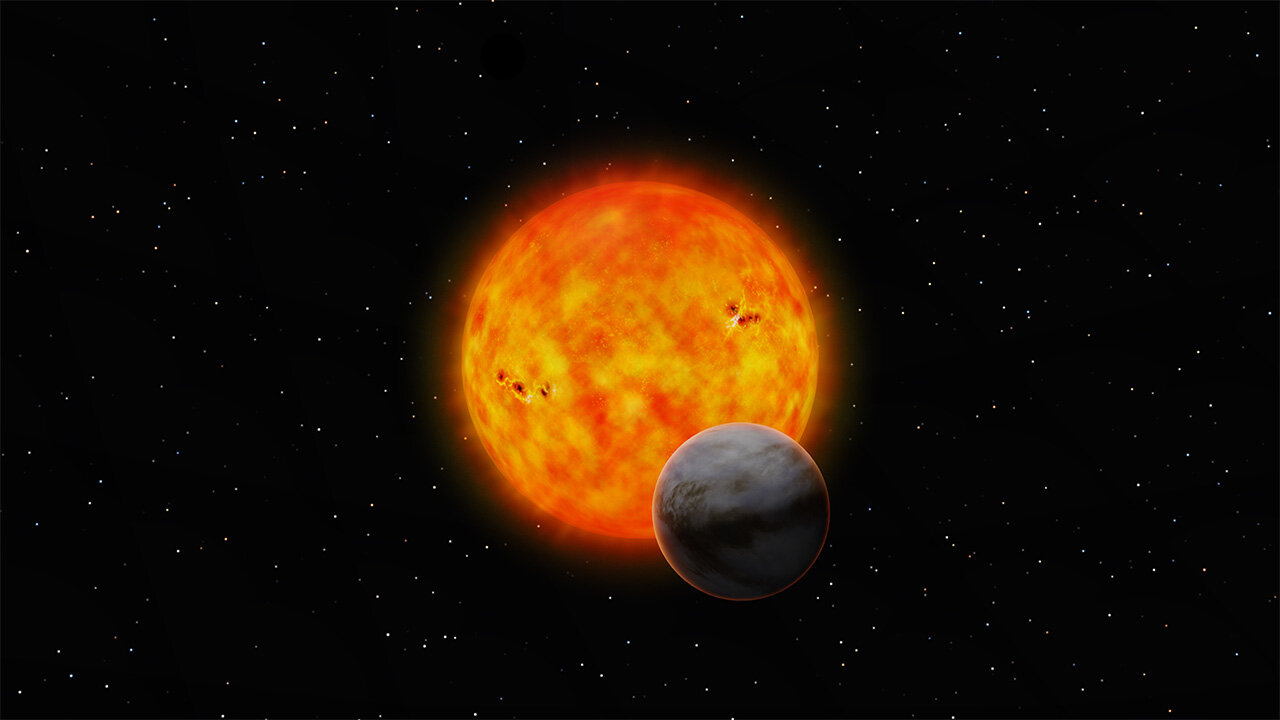New observational data from the James Webb Space Telescope and simulation models have confirmed a new type of planet unlike anything found in the solar system. This provides another piece of the puzzle describing how planets and planetary systems form.
To date, more than 5,000 exoplanets have been confirmed around stars other than the sun. Many exoplanets are unlike any of the planets in the solar system, making it difficult to guess their true natures. One of the most common types of exoplanets falls in a size range between Earth and Neptune.
Astronomers have debated whether these planets are Earth-like rocky planets with thick hydrogen-rich atmospheres, or Neptune-like icy planets surrounded by water-rich atmospheres, called water worlds. Previous studies have been confounded by layers of high, thick clouds, which seem to be common on this type of planet, and make it difficult to study the atmosphere below the cloud deck.
An international team of researchers led by Everett Schlawin at the University of Arizona and Steward Observatory and Kazumasa Ohno at the National Astronomical Observatory of Japan used the James Webb Space Telescope to peer through the clouds at an example of this kind of exoplanet known as GJ 1214 b. Located only 48 light years from the solar system, in the direction of the constellation Ophiuchus, GJ 1214 b is the easiest example of this planet to study.
Instead of a hydrogen-rich super-Earth, or a water world, the new data revealed concentrations of carbon-dioxide (CO2) comparable to the levels found in the dense CO2 atmosphere of Venus in our solar system. But there were still many uncertainties in the new data.
“The detected CO2 signal from the first study is tiny, and so it required careful statistical analysis to ensure that it is real,” explains Ohno. “At the same time, we needed the physical and chemical insights to extract the true nature of GJ 1214 b’s atmosphere from Schlawin’s study.”
Then Ohno took the lead, using theoretical models to run a plethora of “what if” scenarios about the atmosphere of the planet. Out of all of these models, the ones which best fit the data all suggest a carbon-dominated atmosphere, like a “super-Venus.”
The astronomers have published two papers from this research, both in The Astrophysical Journal Letters.
Although fascinating, the atmospheric signature detected in this work is very small. Schlawin compares it to reading a book, “It’s equivalent to Leo Tolstoy’s War and Peace. If I gave you two copies and changed one sentence in one of the books, could you find that sentence?” The team stresses the need for future studies to confirm and expand their findings about this common yet mysterious type of exoplanet.
References: Everett Schlawin et al, Possible Carbon Dioxide above the Thick Aerosols of GJ 1214 b, The Astrophysical Journal Letters (2024). DOI: 10.3847/2041-8213/ad7fef
Kazumasa Ohno et al, A Possible Metal-dominated Atmosphere below the Thick Aerosols of GJ 1214 b Suggested by Its JWST Panchromatic Transmission Spectrum, The Astrophysical Journal Letters (2025). DOI: 10.3847/2041-8213/ada02c
